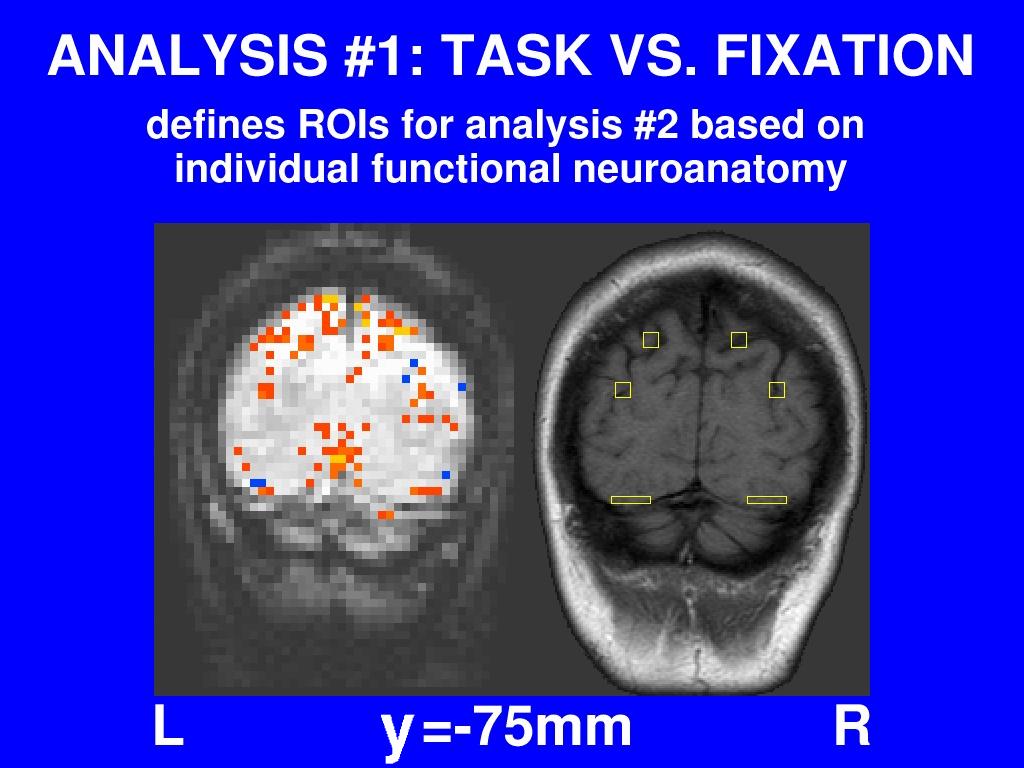

Here in a typical subject you can see task activations in inferior- lateral occipitotemporal cortex, intraparietal sulcus, and superior parietal lobe, and the regions of interest drawn to match those activations. Note that although these regions are being constructed on the basis of Analysis #1, they are being drawn a priori to Analysis #2.
Although drawing regions within individuals is more labour-intensive than computing everything on a Talairach-transformed average brain, given the very small attentional effect sizes that we're looking at, and also the individual variability of the anatomy (especially in the case of intraparietal sulcus), this technique is essential.
![[previous]](../left_arrow.gif) |
![[contents]](../up_arrow.gif) |
![[next]](../right_arrow.gif) |